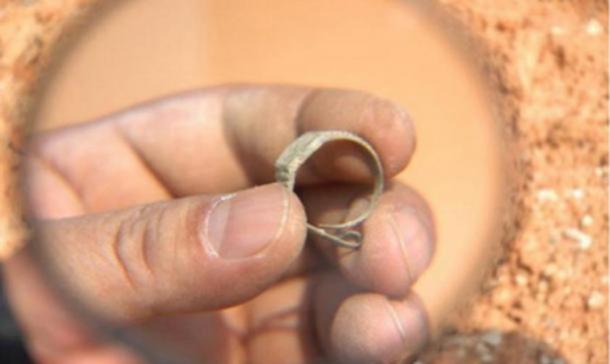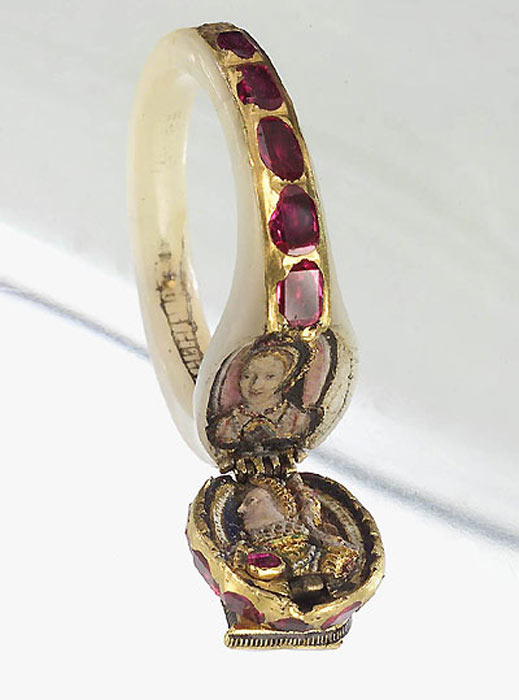An aura of mystery continues to surround the excavation of a curious artifact which was recovered from the depths of an ancient tomb in China. When archaeologists reportedly recovered a modern-looking, mud-encrusted Swiss ring watch from a 400-year-old sealed tomb, their astonishment was apparent. For some, the discovery could only mean one thing – that this was evidence of time travel. But, was it a hoax? Or was the intriguing artifact somehow out of place and time?

Front hall of the Dingling Tomb, a collection of mausoleums built by the Chinese Ming dynasty emperors. The Swiss ring watch was discovered within an unspecified Ming Dynasty tomb. Representational image only. ( Public domain )
Finding the Swiss Ring Watch in a Ming Dynasty Tomb
In 2008 it was reported by several news outlets that a team of archaeologists had made a puzzling discovery. Reports described the archaeological excavations at a sealed tomb dating to the Ming Dynasty in Shangsi, southern China, conducted by a team comprising archaeologists and journalists filming a documentary. As one of the coffins was being cleared of soil before being opened, a strange thing happened.
“When we tried to remove the soil wrapped around the coffin, suddenly a piece of rock dropped off and hit the ground with metallic sound,” said Jiang Yanyu, a former curator of the Guangxi Autonomous Region Museum. “We picked up the object, and found it was a ring. After removing the covering soil and examining it further, we were shocked to see it was a watch.”
The strange metallic object was said to be a small, golden ring, with a watch face on its front, approximately two millimeters thick. Tiny hands on the watch showed time had frozen at 10:06. Most astonishing of all, the back of the diminutive Swiss ring watch was said to have the word “Swiss” or “ Switzerland” written in English. “Swiss Made” is the term used in recent decades to show that product has originated in Switzerland, especially relating to watches.
The Out-of-Place and Out-of-Time Swiss Ring Watch
How was it possible that a tomb sealed for 400 years and dating to the Ming Dynasty, who ruled between 1368 and 1644, had come to hold an artifact that could only have been created after the establishment of the present state of Switzerland. Keep in mind that Switzerland was founded in 1848; previous to then it was known as the Old Swiss Confederacy. Meanwhile, the artifact itself, a Swiss ring watch, is said to date back only a century.
Out-of-place artifacts, or OOPArts, are unique and little-understood objects from the archaeological record which fall into the “anomalous” category. To some, objects such as the Antikythera mechanism , the Maine Penny , and even the Nazca Lines , challenge the conventional understanding of history. They can even reveal that humanity (or otherworldly beings) had a different degree of civilization or sophistication than described and understood by officials and academia.

The Swiss ring watch was discovered in a 400-year-old sealed tomb in China.
Theories About the Out-of-Place Swiss Ring Watch
There are many theories as to how a modern-looking Swiss ring watch might have been discovered by Chinese archaeologists within a 400-year-old sealed tomb. Some researchers cite the possibility of time travelers from the future dropping a Swiss ring watch in an ancient location and accidentally leaving their anachronistic possession behind. The evidence for this is scant, but it is an intriguing idea.
However, it is also within the realm of possibility that the so-called “sealed” tomb was not as secure as the Chinese officials and archaeologists had presumed. Early tomb raiders or explorers secretly gaining access to the tombs cannot be ruled out, although there are no reports on any of the ancient Chinese artifacts having suffered damage or theft, something which might be expected if the tomb had been visited earlier. Still others suggest that if the strange Swiss ring watch had been dropped within the last century or so, a rodent might have taken it and burrowed into the tomb.
Lack of Evidence Surrounding the Swiss Ring Watch
There is still much that is unknown about the story of the Swiss ring watch discovered in China. Was the tiny artifact an actual working mechanism with gears and moving hands? Or was it simply a mold or pressing of a watch face into metal?
Ring watches are fashionable jewelry pieces which were not popular until after 1780 in Europe. In 1588 Queen Elizabeth I is reputed to have worn a special ring watch which functioned as a “clever alarm” with a protrusion which would scratch her finger. Additionally, in 1755 Caron, a Parisian watchmaker created a ring watch that was wound with a key.
However, this is all academic, as the ring watches were not known to be in vogue during the Ming Dynasty , and in its reported condition the ring doesn’t seem to have been a protected grave good. Indeed, it is said the ring was on the outside of the coffin, and seemed to fall away with a light touch.
Finally, there is a lack of background evidence surrounding the entire episode. Though the story has been reported and widely circulated by media outlets, there seems to be little information on the background of the archaeologists and journalists involved in the story. It has never been revealed which tomb in particular was being excavated, by whom, nor any additional information on the coffin itself.

A locket ring which belonged to England’s Queen Elizabeth I. Representational image. ( CC BY-SA 3.0 )
Is the Swiss Ring Watch Incident a Hoax?
The strange mystery of the tiny metal Swiss ring watch has remained unsolved. There is no clear evidence to prove it as a definite OOPArt, nor enough facts to condemn it as a mere hoax. What is certain, however, is that it is a story which ignites the imagination and urges us to reconsider how it might have come to be nestled in a Ming Dynasty tomb before its time.
Top image: The Swiss ring watch found by Chinese archaeologists within a Ming Dynasty tomb. Source: EuroPics
By Liz Leafloor


